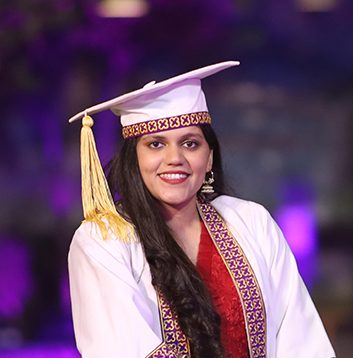
ANUSHA REHMAN
Aspiration Statement
I plan to pursue a career in academia, take part in research and teach students. But for now, I want to explore the industry, work for some time and then pursue a graduate degree for which I’m considering research in telecommunication or optical communication, preferably nanophotonics.
Core Skills
- Python
- MATLAB
- Arduino IDE
- C++
- Creo
Academic Awards / Achievements
- HU TOPS 100% Scholarship
- Dean's List Fall 2020
Experience
Leadership / Meta-curricular
- HU Student Government - Student Senator
- HU Student Government - Secretary S & RC
- Google I/O Extended - Director Liaison
Internship / Volunteer Work
- Liaquat College - Design and Development Intern
- Infosys - Summer of Ideas
- Empathic Computing Lab - Research Intern
Publications / Creative Projects
- Research paper on Deep Learning-based design of Integrated optical grating in CLEO/EQEC 2021
Final Year Project
Project Title
ANN & Deep Learning-based design of nanophotonic structures
Description
The problem we are trying to solve is computational and time complexity for preliminary design simulations of an on-chip nanophotonic structure. The multi-physics softwares, COMSOL, LUMERICAL, etc., used for designing these nanophotonic structures take a significant amount of time and resources for generating results for a single instance of the design iteration. A key challenge is to develop the next generation of on-chip optical solutions for advanced information processing, high-speed data centres, and Quantum Computing. Using machine learning and artificial intelligence concepts, a deep learning-based approach can be used to train multiple models for a wide range of design parameters. Once these models are trained, the computational complexity is greatly decreased and results may be derived in a few seconds. This method also eliminates the need for complex mathematical analysis and calculations, and even allows one to understand the underlying physical and mathematical principles for the nanophotonic device design.